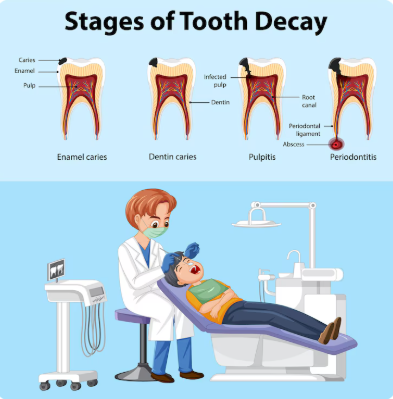A root canal procedure often brings a mix of fear and confusion for many patients. However, advancements in dental technology and treatment techniques have made this common procedure highly effective, virtually painless, and crucial for saving natural teeth.
In this article, we break down everything you need to know about the root canal procedure — from what it is and why it’s needed, to the step-by-step process and recovery timeline.
What Is a Root Canal Procedure?
A root canal is a dental treatment designed to remove infected or damaged pulp (the soft tissue inside the tooth), clean and disinfect the inner chambers, and seal the space to prevent further infection. It’s typically recommended when tooth decay or trauma has reached deep into the pulp, causing inflammation or infection.
The procedure is aimed at saving the natural tooth, preserving its structure, and avoiding extraction.
When Do You Need a Root Canal?
Some common signs and symptoms that indicate a root canal may be necessary include:
- Persistent tooth pain, especially when chewing or applying pressure
- Sensitivity to hot or cold that lingers after exposure
- Swelling or tenderness in nearby gums
- Discoloration or darkening of the tooth
- A pimple-like bump on the gums (dental abscess)
If these symptoms are ignored, the infection can spread, leading to tooth loss or more serious health complications.
Causes of Pulp Damage
To understand why a root canal is needed, it’s important to know what causes the pulp to become infected or inflamed:
- Deep tooth decay that penetrates the enamel and dentin
- Repeated dental procedures on the same tooth
- Cracks or chips in the tooth that expose the inner tissue
- Trauma (even without visible damage) that injures the pulp
- Infections spreading from untreated cavities
Once the pulp is compromised, it cannot heal on its own. Without intervention, bacteria continue to multiply, causing pain and infection that can reach the surrounding bone.
The Root Canal Procedure: Step-by-Step
The root canal process typically requires one or two visits to the dentist or endodontist. Here’s a general outline of what to expect:
1. Examination and X-Rays
The dentist begins with an oral exam and may take X-rays to determine the extent of the infection and shape of the root canals.
2. Local Anesthesia
A local anesthetic is administered to numb the affected area, ensuring the patient feels little to no discomfort during the procedure.
3. Isolation of the Tooth
A rubber dam is placed around the tooth to keep it dry and free of saliva during treatment.
4. Access Opening
The dentist drills a small opening in the crown of the tooth to access the pulp chamber and root canals.
5. Removal of Infected Pulp
Using fine instruments, the infected or dead pulp is carefully removed from each canal. The space is then cleaned, shaped, and disinfected.
6. Filling the Canals
After cleaning, the empty canals are filled with a biocompatible material called gutta-percha and sealed with an adhesive cement.
7. Temporary or Permanent Filling
A temporary filling is placed to close the opening. In many cases, a follow-up visit is required to place a permanent filling or crown to restore full function and strength.
Post-Procedure Recovery and Care
After a root canal, it’s normal to experience mild discomfort, sensitivity, or swelling for a few days. These symptoms are manageable with over-the-counter pain medications and should gradually subside.
Care Tips After a Root Canal:
- Avoid chewing on the treated tooth until it’s fully restored.
- Maintain regular oral hygiene — brushing twice daily and flossing.
- Attend follow-up appointments for crown placement if recommended.
- Report any severe pain, swelling, or unusual discharge to your dentist.
Why Saving the Natural Tooth Matters
A root canal helps preserve your natural tooth, which offers several advantages:
- Maintains natural biting and chewing ability
- Prevents shifting of adjacent teeth
- Retains natural appearance and smile
- Avoids the need for tooth extraction and replacement
Root canals have a success rate of over 95%, and with proper care, a treated tooth can last a lifetime.
Common Misconceptions About Root Canals
Despite being a routine and highly successful procedure, many myths surround root canals:
- “Root canals are painful.”
With modern anesthesia and techniques, the procedure is no more uncomfortable than a filling. - “Extraction is better than a root canal.”
Saving the natural tooth is always preferred, as it maintains the structure and function of the mouth. - “It takes multiple visits.”
Most root canals are completed in one or two appointments, depending on the complexity.
Conclusion
The root canal procedure is a highly effective way to relieve pain, stop infection, and preserve your natural teeth. It allows patients to maintain their oral health without the need for more invasive treatments like tooth extraction and implants.
If you’re experiencing tooth pain or suspect you may need a root canal, consult your dentist as soon as possible. Early intervention not only saves the tooth but also prevents complications and supports long-term oral wellness.

